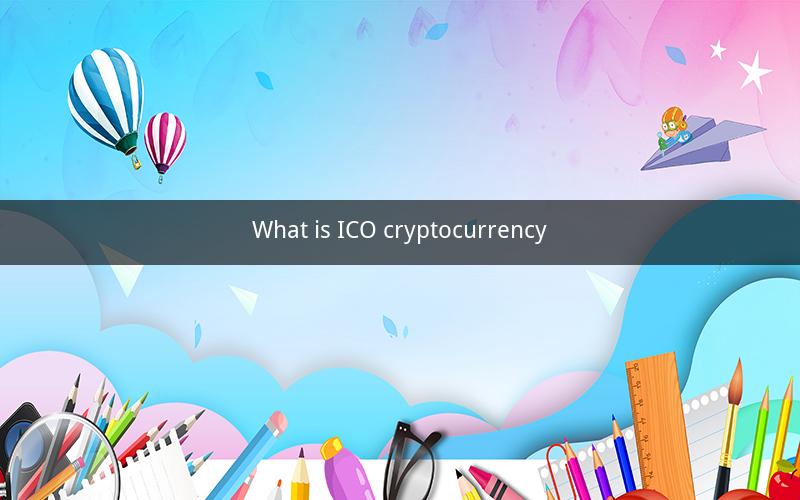
Contents
1. Introduction to ICO Cryptocurrency
2. The Concept of Initial Coin Offering (ICO)
3. How ICOs Work
4. Benefits of ICOs
5. Risks and Challenges of ICOs
6. ICO vs. IPO
7. Famous ICOs and Their Outcomes
8. The Future of ICOs in the Cryptocurrency Market
9. Conclusion
1. Introduction to ICO Cryptocurrency
The rise of cryptocurrencies has sparked a new era in financial technology. Among the various concepts and innovations in this space, Initial Coin Offerings (ICOs) have gained significant attention. This section will provide an overview of ICOs, their purpose, and their relevance in the cryptocurrency market.
2. The Concept of Initial Coin Offering (ICO)
An Initial Coin Offering is a fundraising method used by startups and companies to raise capital. It involves issuing and selling digital tokens to investors in exchange for cryptocurrencies like Bitcoin or Ethereum. These tokens can represent a share in the company or a utility within the platform.
3. How ICOs Work
The process of an ICO typically involves the following steps:
- Preparation: The company develops a whitepaper outlining its project, goals, and tokenomics.
- Launch: The ICO is announced, and interested investors can participate by purchasing tokens with cryptocurrencies.
- Token Distribution: Investors receive the promised tokens after the ICO, which can then be traded on exchanges.
- Use of Funds: The company uses the funds raised to develop its product or service.
4. Benefits of ICOs
ICOs offer several benefits to both startups and investors:
- Rapid Funding: ICOs can raise substantial amounts of capital in a short period.
- Decentralization: Unlike traditional IPOs, ICOs are decentralized, allowing companies to reach a global audience.
- Token Utility: Tokens can provide utility within the platform, rewarding investors for their participation.
5. Risks and Challenges of ICOs
Despite their benefits, ICOs come with their own set of risks and challenges:
- Regulatory Uncertainty: The legal status of ICOs varies by country, leading to uncertainty and potential legal issues.
- Market Volatility: Cryptocurrency markets are highly volatile, which can lead to significant losses for investors.
- Scams and Fraud: The lack of regulation has led to an increase in fraudulent ICOs.
6. ICO vs. IPO
ICOs and IPOs share some similarities but differ in several key aspects:
- Regulation: IPOs are subject to strict regulatory scrutiny, while ICOs often operate in a less regulated environment.
- Investment: IPOs involve purchasing shares in a company, while ICOs involve purchasing tokens.
- Market: IPOs are typically listed on stock exchanges, while ICO tokens are often traded on cryptocurrency exchanges.
7. Famous ICOs and Their Outcomes
Several high-profile ICOs have captured the public's attention. Some notable examples include:
- Ethereum (ETH): Launched in 2014, Ethereum raised $18 million in its ICO, becoming one of the most successful ICOs at the time.
- EOS (EOS): Launched in 2017, EOS raised $4 billion, making it the most significant ICO to date.
- Tezos (XTZ): Launched in 2017, Tezos raised $232 million, facing regulatory challenges and legal disputes.
8. The Future of ICOs in the Cryptocurrency Market
The future of ICOs remains uncertain. As regulations become more stringent and the market matures, ICOs may evolve to become more sustainable and secure. Some potential developments include:
- Increased Regulation: Governments and regulatory bodies may introduce clearer guidelines for ICOs, reducing fraud and market volatility.
- Tokenization: Companies may explore tokenization as a way to create new financial instruments and investment opportunities.
- Decentralized Autonomous Organizations (DAOs): DAOs, which operate without traditional management structures, may become more prevalent, utilizing ICOs to fund their operations.
9. Conclusion
ICOs have revolutionized the way startups and companies raise capital, providing a unique and innovative approach to investment. While the market is still evolving, the potential of ICOs to transform the financial landscape is undeniable. As regulations and market dynamics continue to change, the future of ICOs remains an exciting area to watch.
---
Questions and Answers
1. What is the main purpose of an ICO?
- An ICO is primarily used by startups and companies to raise capital by issuing and selling digital tokens to investors.
2. Can individuals participate in an ICO?
- Yes, individuals can participate in an ICO by purchasing tokens with cryptocurrencies.
3. What is a whitepaper in the context of an ICO?
- A whitepaper is a document that outlines the goals, technology, and business model of an ICO project.
4. Are there any legal risks associated with participating in an ICO?
- Yes, the legal status of ICOs varies by country, and participating in an ICO can expose individuals to legal risks.
5. How can investors protect themselves from fraudulent ICOs?
- Investors can protect themselves by thoroughly researching the project, understanding the team behind it, and being cautious of overly optimistic claims.
6. Can ICO tokens be exchanged for fiat currency?
- In most cases, ICO tokens can only be traded for other cryptocurrencies, and converting them to fiat currency is not straightforward.
7. What is the difference between a token and a share?
- Tokens represent a claim on the utility of a platform or a share in the company, whereas shares represent ownership in a company.
8. How are ICOs different from traditional crowdfunding?
- ICOs are a form of crowdfunding that involves the issuance of digital tokens, while traditional crowdfunding often involves donations or rewards.
9. What role do blockchain technology and smart contracts play in ICOs?
- Blockchain technology provides a secure and transparent platform for conducting ICOs, while smart contracts automate the process of token distribution.
10. Is it possible for an ICO to fail?
- Yes, an ICO can fail due to a variety of reasons, including regulatory challenges, market conditions, or the failure of the project itself.